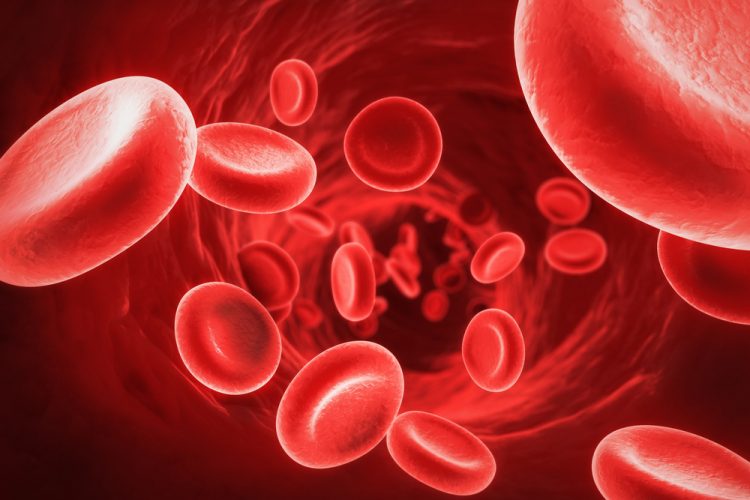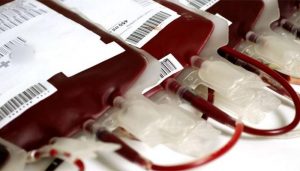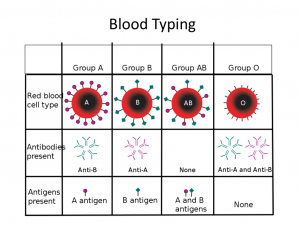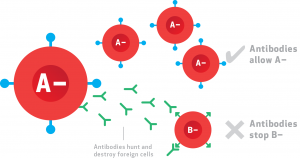Have you ever heard about blood type called golden blood? Probably, it is a bit uncommon for you. If you have golden blood type, you are a very special person in the world. This blood type has recorded in less than 50 people in the world. That’s why doctors named it as golden blood. Even though it sounds like valuable, people with golden blood are in danger. Finding a donor with the same blood group is extremely difficult in an emergency. It is the rarest blood type in the world. Now, l know most of you may ask that why is it so rare? You will realize the answer at the end of this article.
Let’s learn about general basic factors about major blood typing systems before learning about golden blood. These facts help you to understand about golden blood type.
Human blood mainly consists of red blood cells, white blood cells, platelets and plasma. Red blood cells are the Oxygen carriers around the whole body. White blood cells are the warriors who destroy harmful viruses and bacteria, protecting our body. Platelets are important in blood clotting. However, the red blood cells are a really important part in determining the type of blood.
ABO System
We all know about four major blood types based on ABO blood type system; A, B, AB and O. Blood types determine based on the A and B antigens that are present in the red blood cell membrane.
Commonly, an antigen is any substance to which the immune system can respond. Blood type antigens are either sugars or proteins. Especially, antigens in the ABO system are sugars(oligosaccharides). They attach to red blood cell membrane proteins or lipids.
The A blood group contains A antigens in the red blood cell membrane. If both A and B antigens are present, blood type is AB. Absence of both antigens in red blood cell membranes result in O blood type. It is the most common blood type which considered as universal donor type. Each of these blood types can divide into Rh-positive type and Rh-negative type based on rhesus factor in Rh blood system. In contrast to the ABO system, antigens of the Rh system are proteins which encode by the RH gene in the human genome. Thus, there are eight major blood types; A+, A-, B+, B-, AB+, AB-, O+, O-.
Blood compatibility is important in blood transfusions. Otherwise, incompatible blood with foreign antigens in red blood cells react with antibodies in plasma causing blood clotting. As an example, let’s think that you have A blood group. It means that A antigen present in the red blood cell membrane and anti-B antibodies are present in your blood plasma. If B blood group with B antigens are given to you, anti- B antibody in your blood will react with antigen B resulting clotting and agglutination. These situations can be lethal.
Likewise, compatibility of the receiver’s blood antibodies with donor’s red blood cell antigens are a really important factor in blood transfusions. Most of the time, donor’s red blood cells and plasma separates from each other before storing them. Therefore donor’s blood antibodies do not cause problems with receiver’s red blood cell antigens.
Rh System
However, compatibility considerations are not only based on the ABO system but also based on the Rh system. Rh-negative blood can transfuse to people with Rh-negative and Rh-positive blood types. But, Rh-positive blood only matches with Rh-positive blood. Normally, Rh antibodies are not present in blood plasma as anti-A and anti-B antibodies.
When Rh-positive blood accidentally mixes with Rh-negative blood, anti-Rh antibodies produce in the blood plasma. Development of Rh-positive fetus in Rh-negative mother results mixing of two incompatible blood types at the moment of birth. Afterwards, Rh antibodies are present in the mother’s blood plasma. This situation creates lethal condition for future development of Rh-positive fetus.
Genetic background of the Rh system
Rh system is the most complex blood typing system. It composed different Rhesus antigens (49) in red blood cell membranes in the human population. Rearrangements between genes responsible for encoding Rh antigens results in different Rh antigens. RHD and RHCE are the major genes located on chromosome 1. RHD genes are responsible for encoding D antigen. RHCE genes are responsible for encoding C/c antigen and E/e antigen and other Rh antigens.
These antigens were initially identified in the blood of rhesus monkey. That’s why this system named as the rhesus system. Simply, Rh antigens are non-glycosylated proteins that are embedded in cell membranes. Among them, D, C, E, c and e antigens are more significant in the Rh system. Mainly, the presence or absence of the D antigen results Rh + and Rh – blood types.
Why Golden Blood is rare?
Now you have a good understanding of ABO and Rh blood typing systems. So, let’s talk about the golden blood type again. Golden blood was firstly discovered in 1961 from native Australian woman. Rh null blood type is another name for it. It indicates a complete lack of all Rh antigens in red blood cells. Lack of Rh antigens causes changes in shape, an increment of the tendency to break down and shortening the life of red blood cells. Therefore people with golden blood type usually suffer from mild hemolytic anemia( fast destruction of red blood cells).
Most of the people have Rh antigens. Thus, the complete absence of Rh antigens is extremely rare. If you lack an antigen that 99 per cent of people have, then your blood considered as a rare one.
Complete absence of Rh antigens can occur due to mutations at the RH genes that silence Rh antigen expression. However, the absence of the D antigen is relatively common in the human population, resulting in Rh- negative phenotype. A deletion or genetic alteration of the RHD genes are the reason for that. Golden blood can result due to both genes (RHD and RHCE genes) inactivation. Mutations at the regulatory genes of RH genes can be another reason for Rh null phenotype.
Rare blood donor panels
It is essential to develop rare blood storage for protecting people with rare blood types. Thus, network of international rare blood donor panels and banks of cryopreserved red blood cell units has been established to safeguarding these people. The World Health Organization established one of the earliest International Rare Donor Panels (IRDP) in 1964. Currently, their major objectives are identifying and increasing the number of rare blood donors in the panel. If you are having rare blood type, you can also contribute to the IRDP for saving other’s life as well as your own life.
Finally, let me give one more massage for you all. Don’t be late. We all can donate our blood even though it is not a rare one for protecting the lives of other humans.
References
- https://www.ncbi.nlm.nih.gov/books/NBK2261/pdf/Bookshelf_NBK2261.pdf
- https://www.science.org.au/curious/people-medicine/rare-blood-types
- www.omim.org
- https://www.sciencedirect.com/science/article/abs/pii/S0037196300900404
- https://onlinelibrary.wiley.com/doi/full/10.1111/vox.12357
Image courtesy
1.https://s2.studylib.net/store/data/015341743_1-38f77e1489db74fd7af8b502499c6934.png
3.https://dp9bxf2pat5uz.cloudfront.net/wp-content/uploads/shutterstock_75626410-750×500.jpg
4. https://external-content.duckduckgo.com/iu/?u=https%3A%2F%2Fblood.ca%2Fsites%2Fdefault%2Ffiles%2Fmigrate_images%2Fblod-types-2-wide.png&f=1&nofb=1
5. https://o.quizlet.com/doogWAzp0yf9sqWEPaUS2A.png





